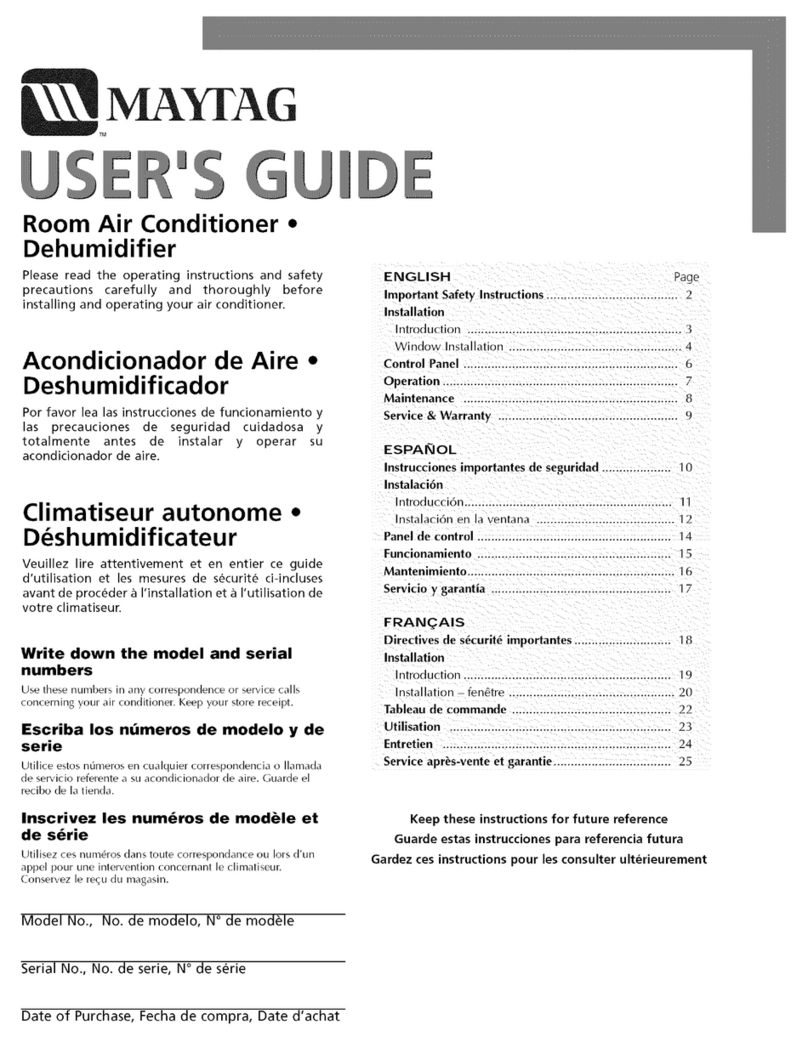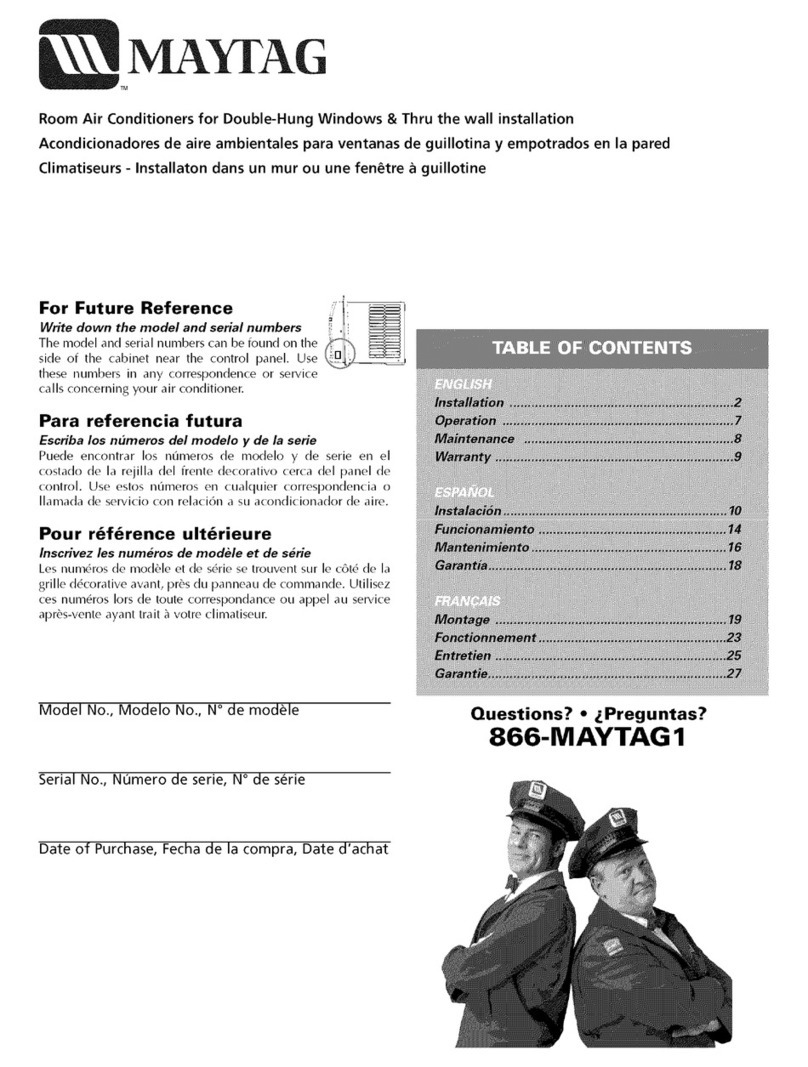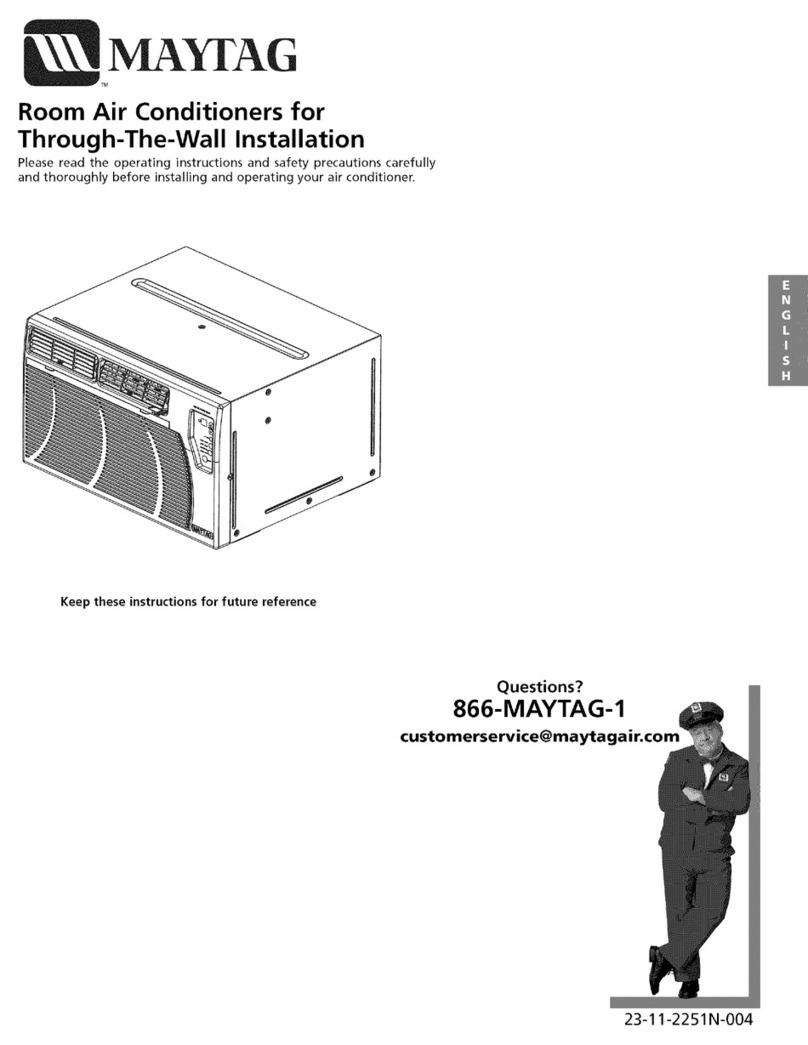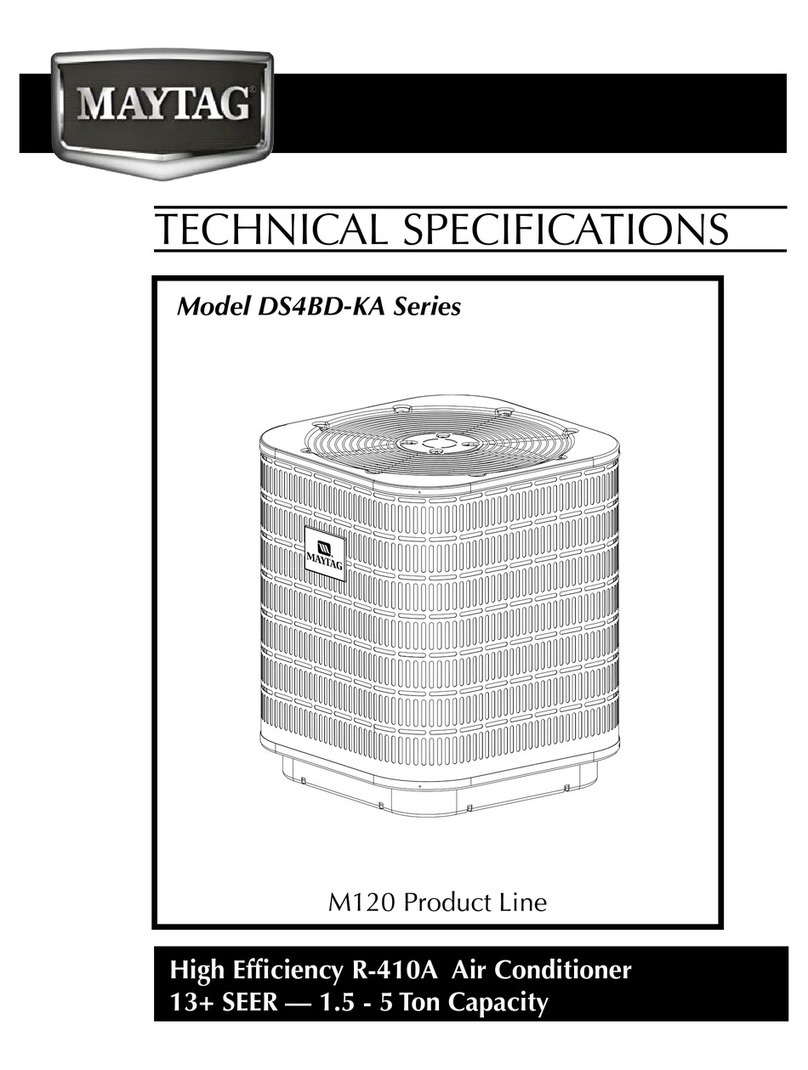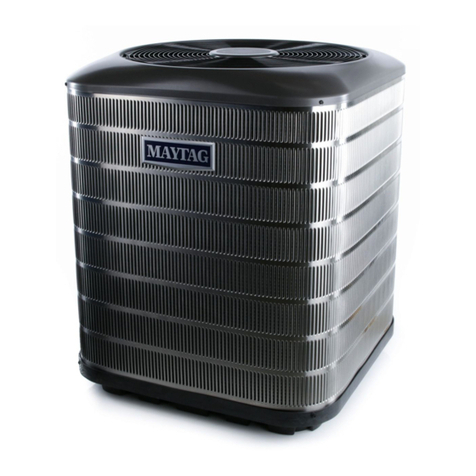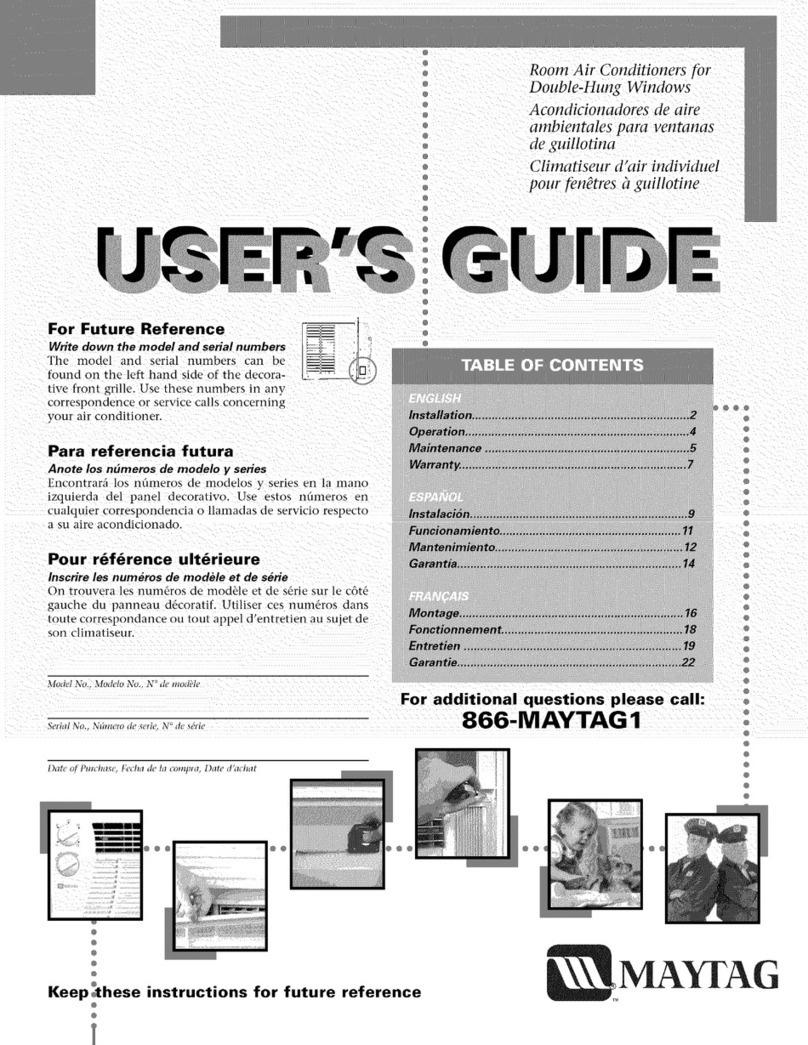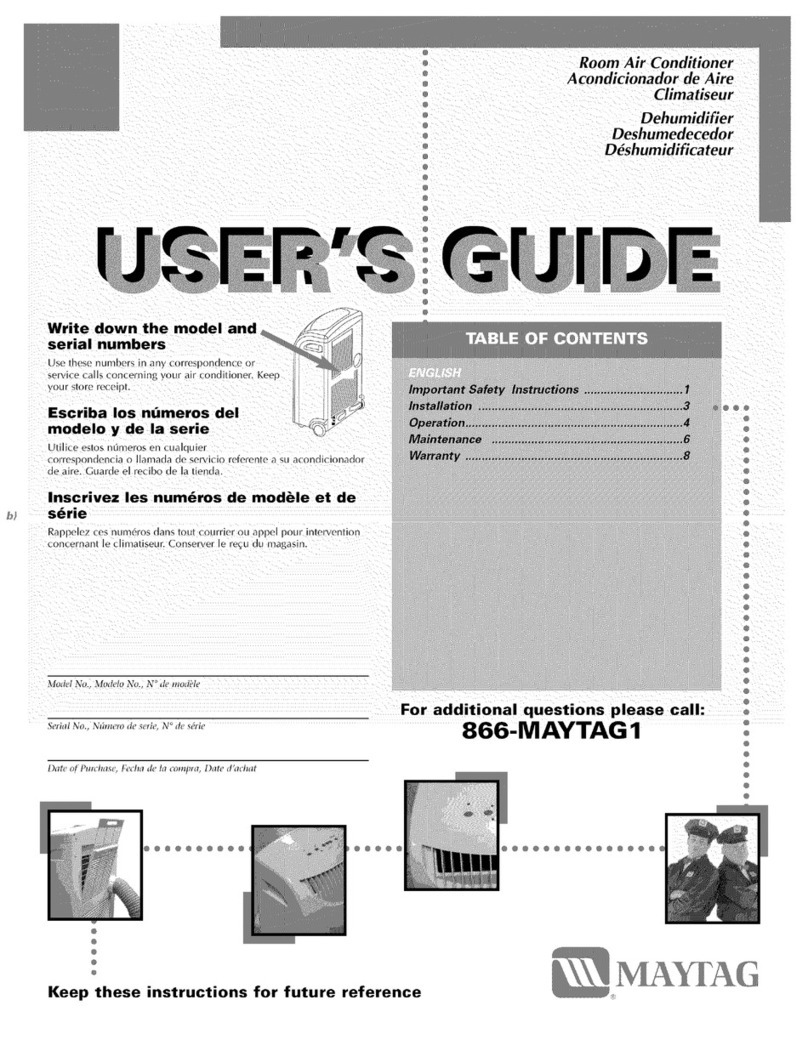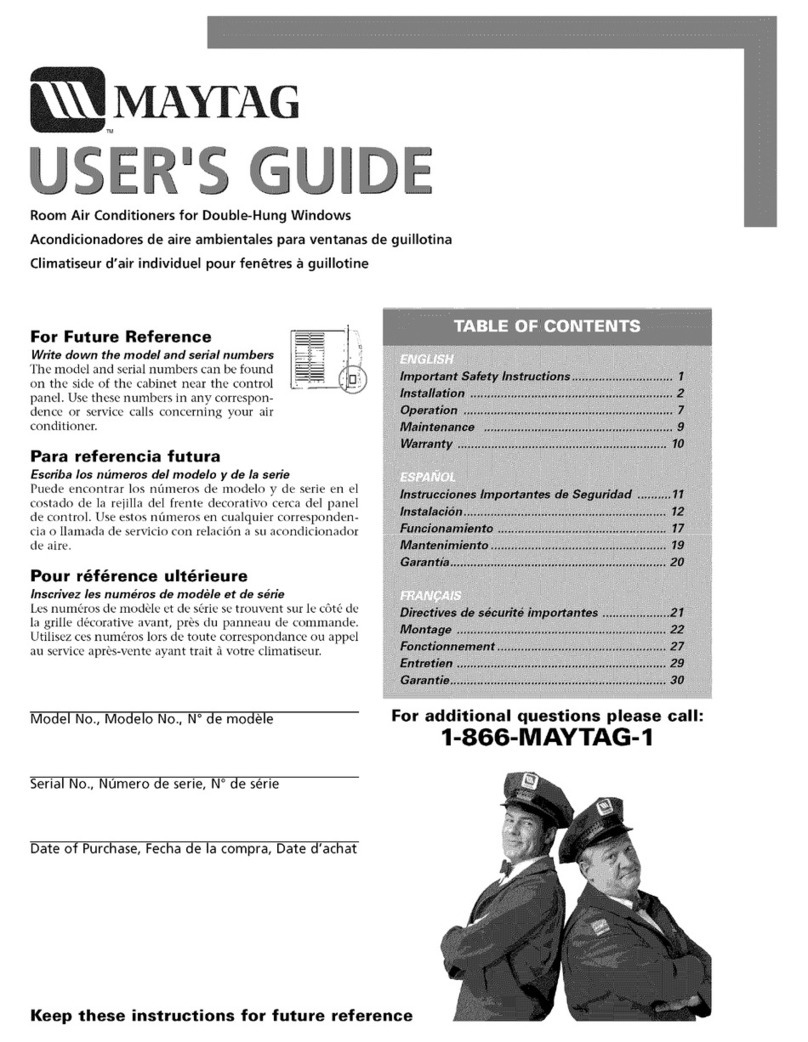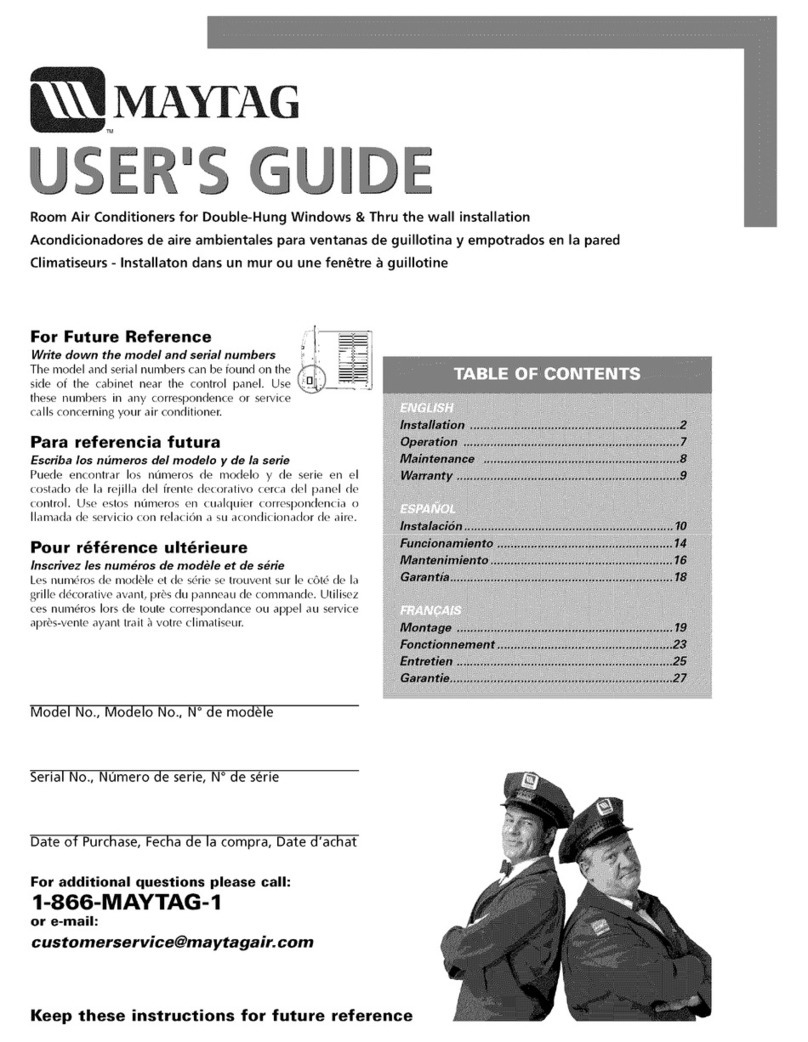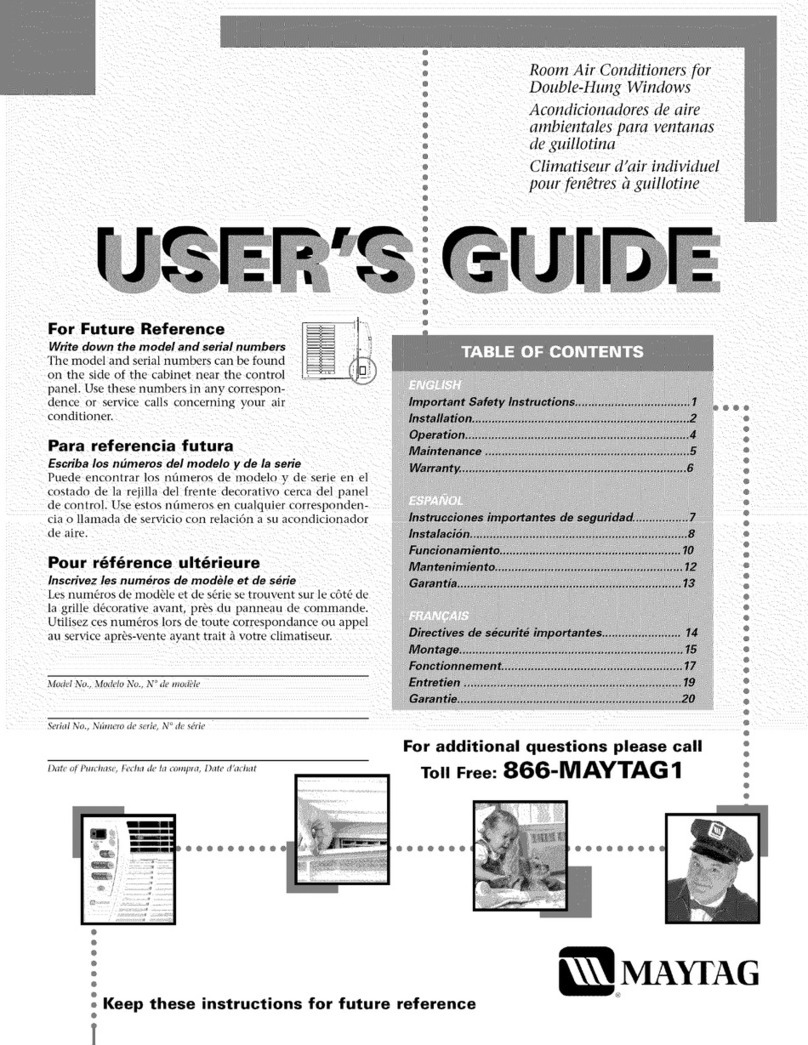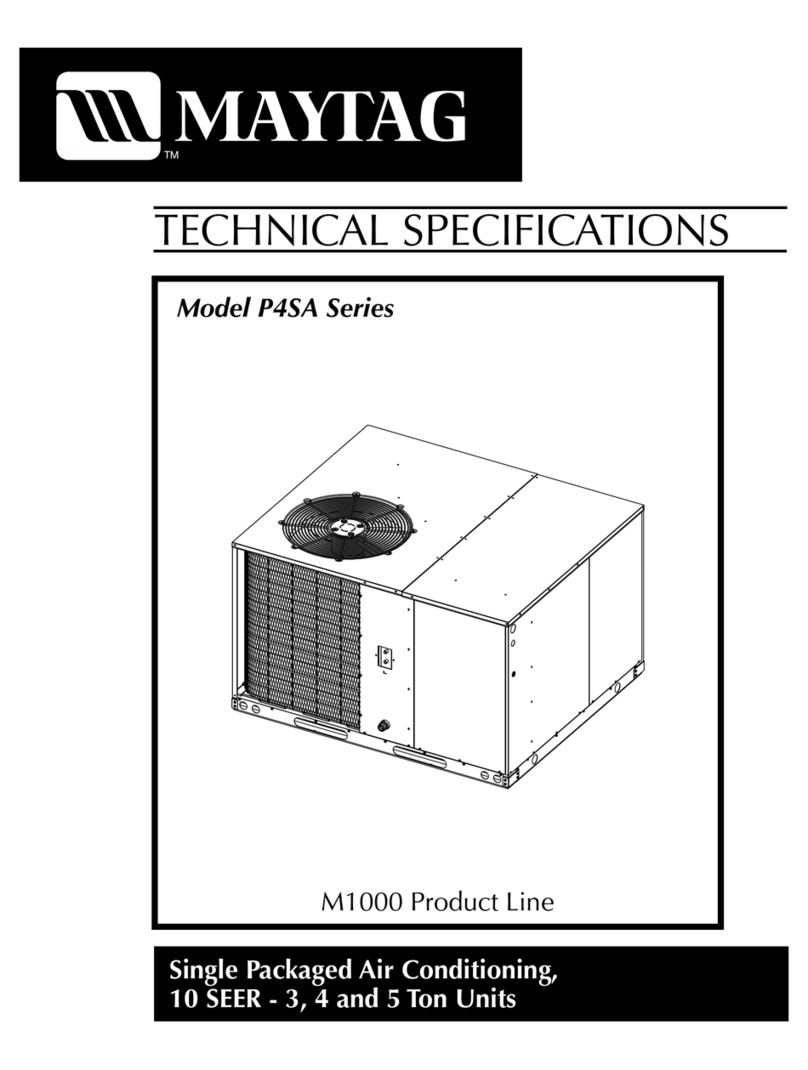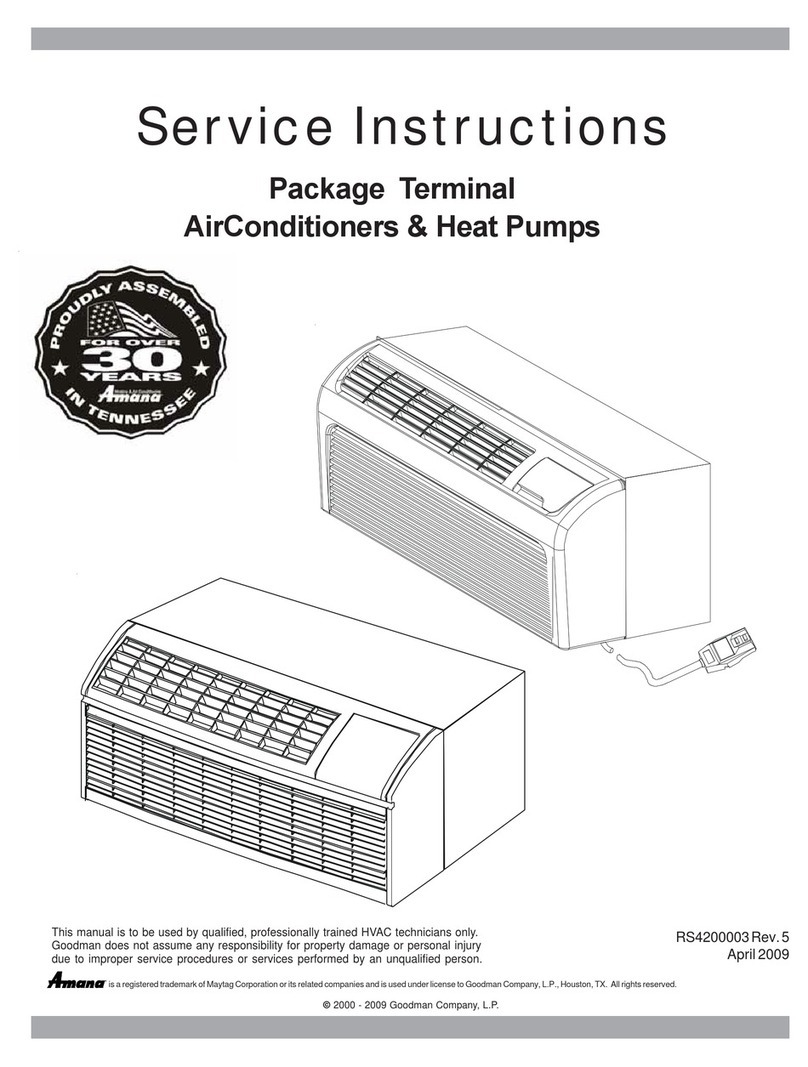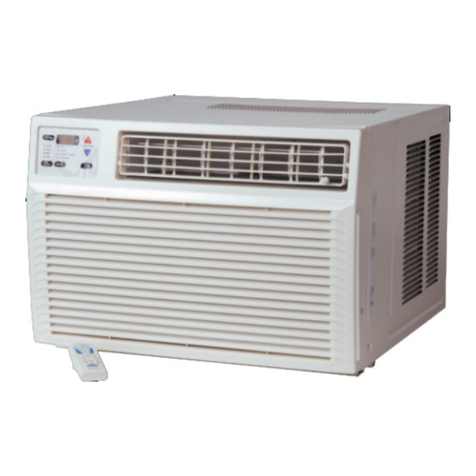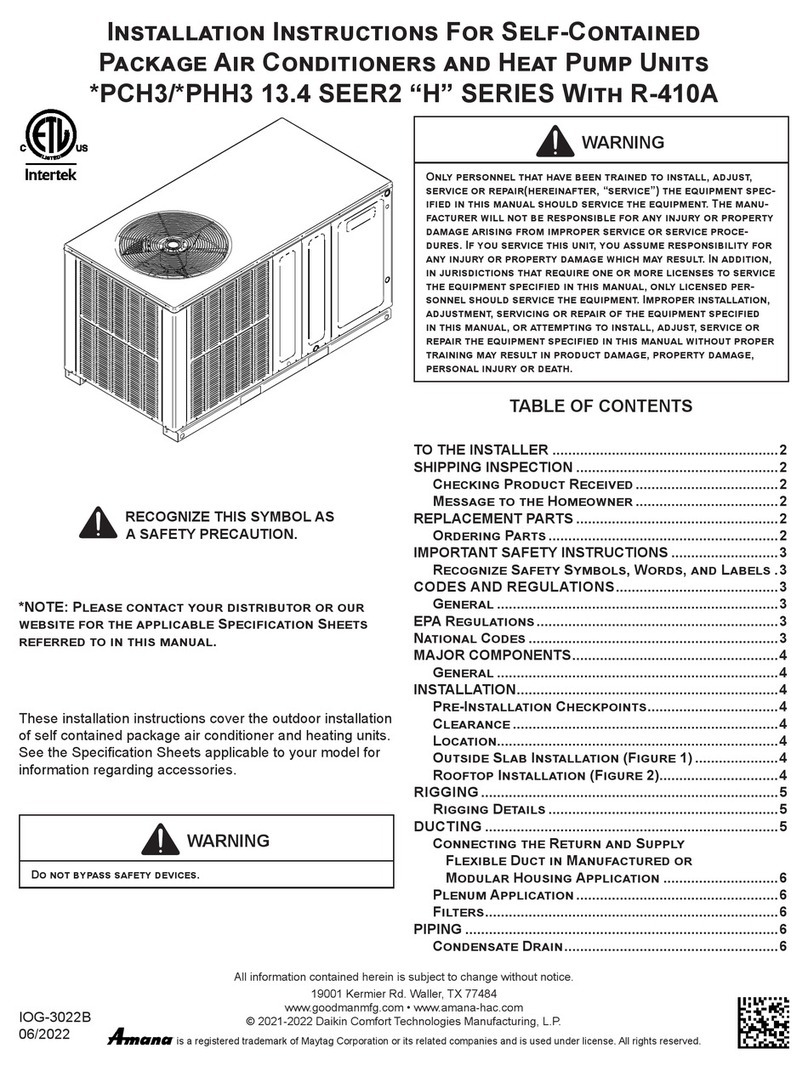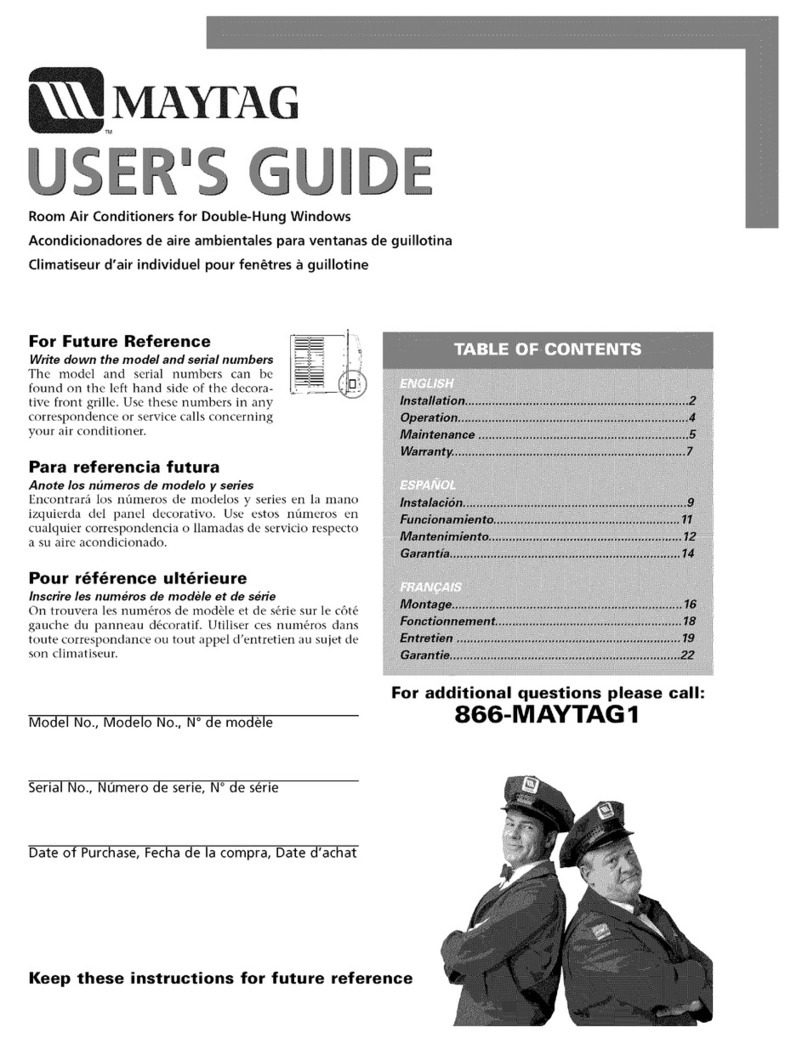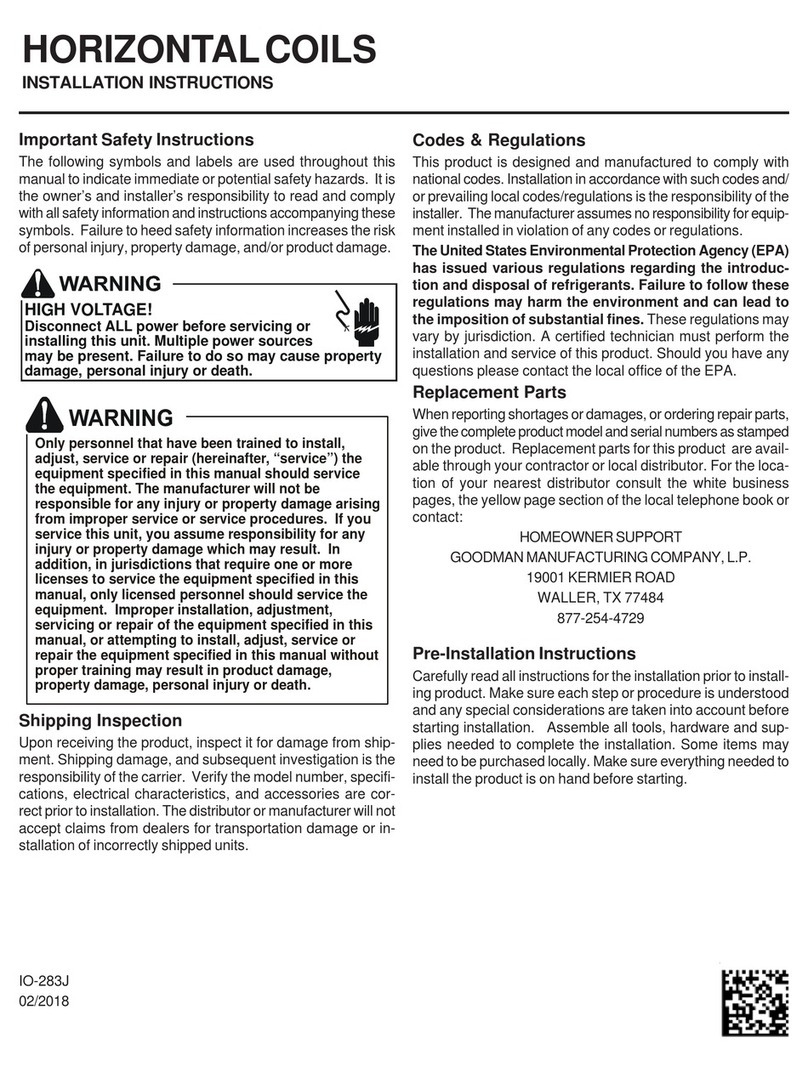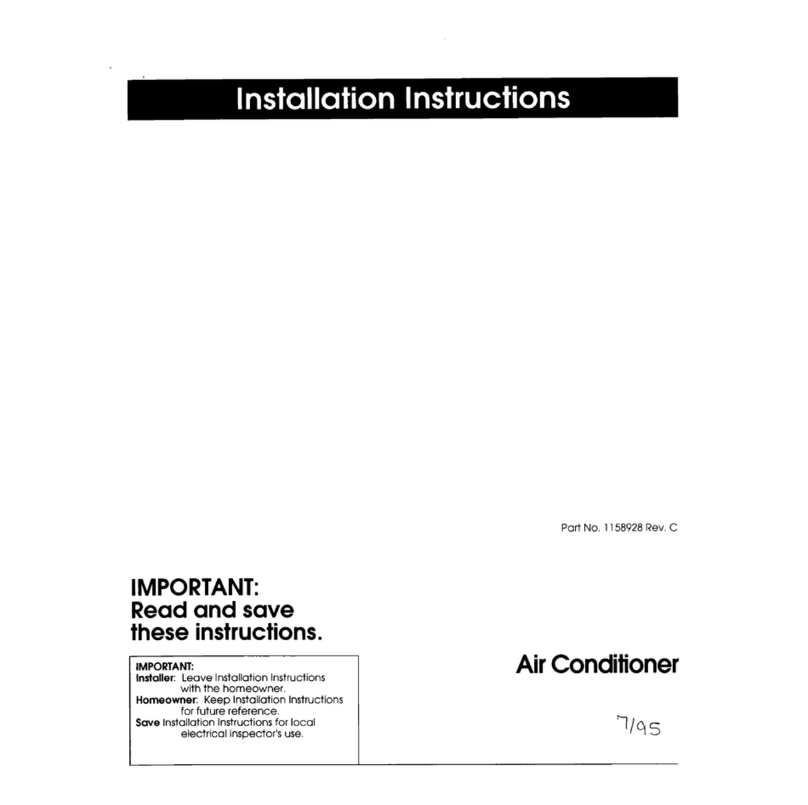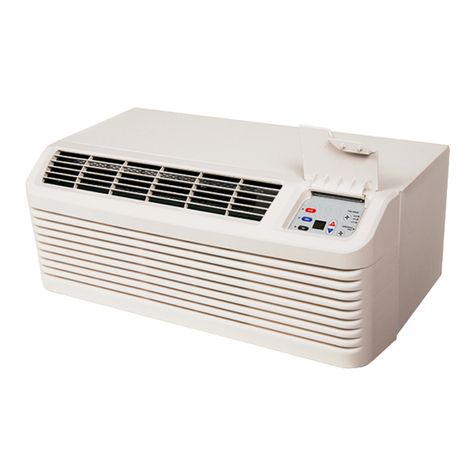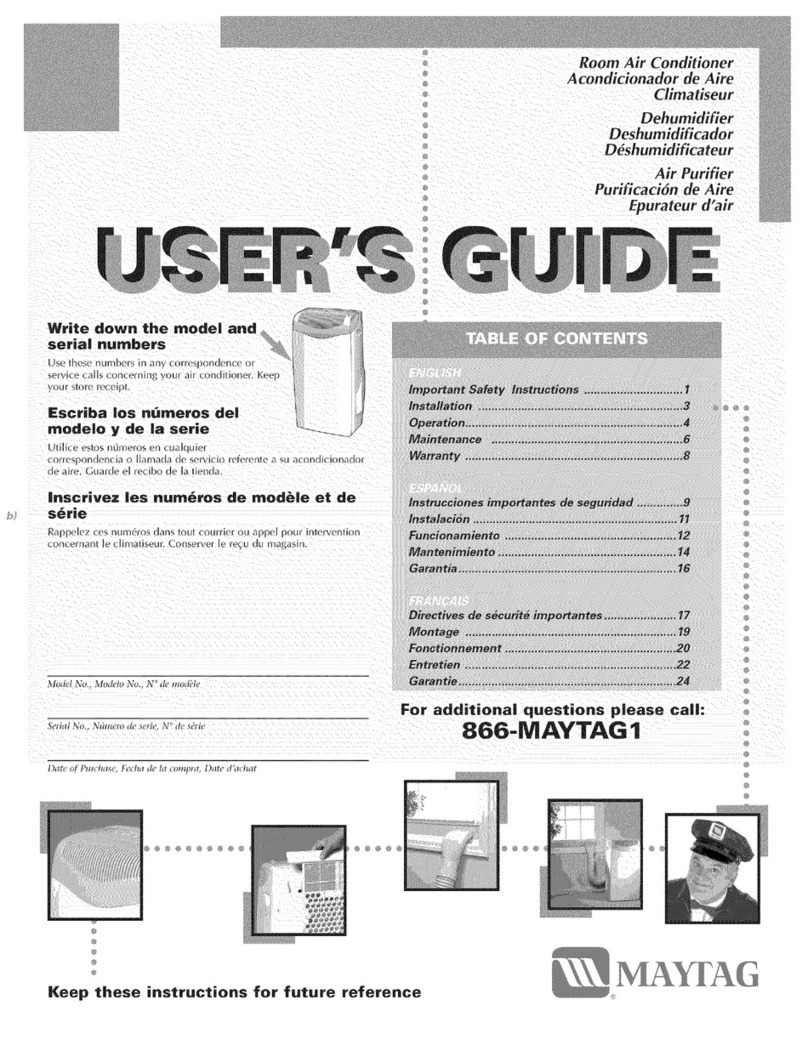
10
When the heat pump is in the heating cycle, the outdoor coil is
functioning as an evaporator. The temperature of the refrigerant in
the outdoor coil must be below the temperature of the outdoor air
in order to extract heat from the air. Thus, the greater the difference
in the outdoor temperature and the outdoor coil temperature, the
greater the heating capacity of the heat pump. This phenomenon
is a characteristic of a heat pump. It is a good practice to provide
supplementary heat for all heat pump installations in areas where
the temperature drops below 45° F. It is also a good practice to
provide sufficient supplementary heat to handle the entire heating
requirement should there be a component failure of the heat pump,
such as a compressor, or refrigerant leak, etc.
Since the temperature of the refrigerant in the outdoor coil on the
heating cycle is generally below freezing point, frost forms on the
surfaces of the outdoor coil under certain weather conditions of
temperature and relative humidity. Therefore, it is necessary to
reverse the flow of the refrigerant to provide hot gas in the outdoor
coilto melt thefrost accumulation.This is accomplishedby reversing
theheat pumpto the cooling cycle.Atthesame time,the outdoorfan
stops to hasten the temperature rise of the outdoor coil and lessen
the time required for defrosting. The indoor blower continues to run
and the supplementary heaters are energized.
DEFROST CONTROL
During operation the power to the circuit board is controlled by a
temperature sensor, which is clamped to a feeder tube entering
the outdoor coil. Defrost timing periods of 30, 60 and 90 minutes
may be selected by setting the circuit board jumper to 30, 60 and
90 respectively.Accumulation of time for the timing period selected
starts when the sensor closes (approximately 31° F), and when
the wall thermostat calls for heat. At the end of the timing period,
the unit’s defrost cycle will be initiated provided the sensor re-
mains closed. When the sensor opens (approximately 75° F), the
defrost cycle is terminated and the timing period is reset. If the
defrost cycle is not terminated due to the sensor temperature, a
twelve minute override interrupts the unit’s defrost period.
SUGGESTED FIELD TESTING/TROUBLE SHOOTING
1. Run unit in the heating mode (room thermostat calling for
heat).
2. Check unit for proper charge. Note: Bands of frost on the
condenser coil indicate low refrigerant charge.
3. Shut off power to unit.
4. Disconnect outdoor fan by removing the outdoor fan motor
wire from “DF2” on defrost control.
5. Restart unit and allow frost to accumulate.
6. After a few minutes of operation, the unit’s defrost
thermostat should close. To verify this, check for 24 volts
between “DFT” and “C” on board. If the temperature at the
thermostat is less than 28° F and the thermostat is open,
replacethe unit’sdefrost thermostat, as it is defective.
7. When the unit’s defrost thermostat has closed, short the
test pins on the defrost board until the reversing valve
shifts, indicating defrost. This should take up to 22
seconds depending on what timing period the control is
set on. After defrost initiation, the short must instantly be
removed or the unit’s defrost period will only last 3
seconds.
8. The control is shipped from the factory with the compressor
delay option selected. This will de-energize the
compressor contactor for 30 seconds on defrost initiation
and defrost termination. If the jumper is set to Normal, the
compressor will continue to run during defrost initiation
and defrost termination. The control will also ignore the
low pressure switch connected to R-PS1 and PS2 for 5
minutes upon defrost initiation and 5 minutes after defrost
termination.
9. After the unit’sdefrost thermostathas terminated, check the
defrost thermostat for 24 volts between “DFT” and “C”. The
readingshould indicate0 volts (opensensor).
10.Shutoff powerto unit.
11. Replaceoutdoorfan motorleadtoterminal “DF2”ondefrost
board and turn on power.
AIRFLOWMEASUREMENTAND ADJUSTMENT
After reviewing Duct Work section, proceed with airflow measure-
ments and adjustments. The unit blower curves (see Specifica-
tion Sheets) are based on external static pressure (ESP per in/wc).
The duct openings on the unit are considered internal static pres-
sure.Aslong asESPismaintained, the unitwill deliverthe properair
upto themaximum static pressure listed forthe CFMrequired bythe
application(i.e. home, building,etc.)
In general, 400 CFM per ton of cooling capacity is a rule of thumb.
Someapplications depending on the sensibleand latentcapacity re-
quirementsmayneedonly350CFMor up to 425CFMperton. Check
condition space load requirements (from load calculations) and
equipment expanded ratings data to match CFM and capacity.
After unit is set and duct work completed, verify the ESP with a
1-inch inclined manometer with pitot tubes or a Magnahelic gauge
and confirm CFM to blower curves in the Specification Sheets. All
units have three-speed blower motors. If low speed is not utilized,
the speed tap can be changed to medium or high speed.
NOTE: Neverrun CFMbelow 350 CFM per ton, evaporator freezing
or poor unit performance is possible.
